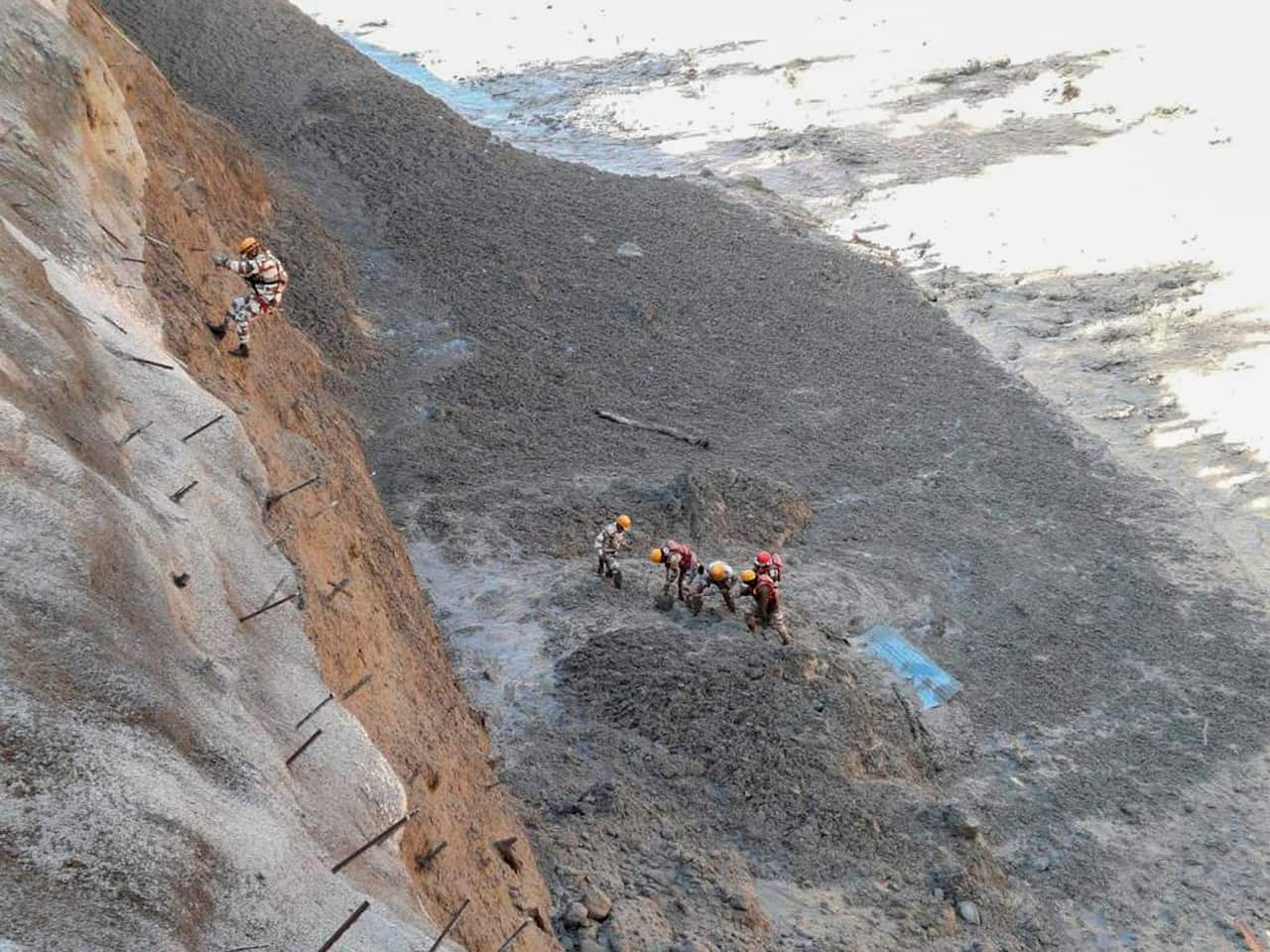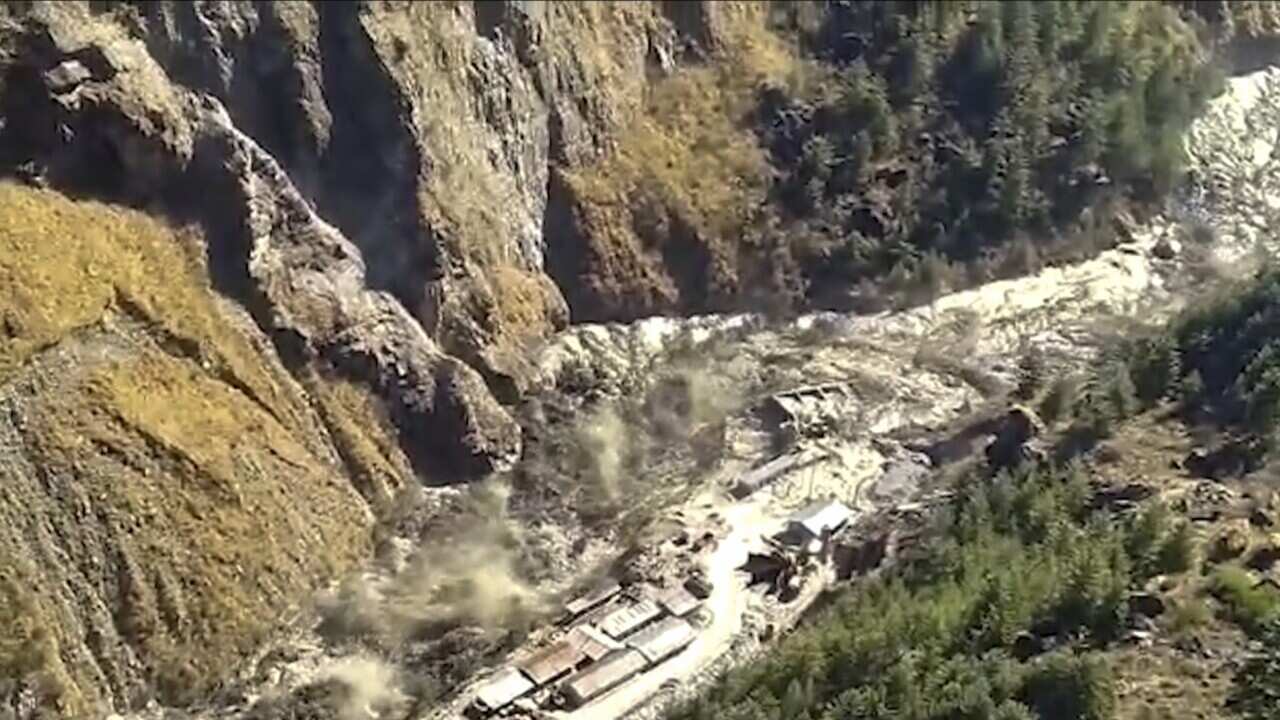As many as 150 people are feared dead in northern India after a Himalayan glacier broke and swept away a hydroelectric dam, with floods forcing the evacuation of villages downstream.
"The actual number has not been confirmed yet," but 100 to 150 people were feared dead following the incident on Sunday, Om Prakash, chief secretary of Uttarakhand state where the incident occurred, told Reuters. A witness reported a wall of dust, rock and water as an avalanche roared down the Dhauli Ganga river valley located more than 500 kilometres north of New Delhi.
A witness reported a wall of dust, rock and water as an avalanche roared down the Dhauli Ganga river valley located more than 500 kilometres north of New Delhi.

Personnel begin rescue work after a portion of the Nanda Devi glacier broke off, crashing into a dam. Source: Indo Tibetan Border Police/AAP
"It came very fast, there was no time to alert anyone," Sanjay Singh Rana, who lives on the upper reaches of the river in Raini village in Uttarakhand, told Reuters by phone. "I felt that even we would be swept away."
Uttarakhand's Police Chief Ashok Kumar told reporters more than 50 people working at the dam, the Rishiganga Hydroelectric Project, were feared dead though some others had been rescued.
Kumar also said authorities had evacuated other dams to contain the water rushing in from the flooded Alakananda river.
Prime Minister Narendra Modi said he was closely monitoring the situation.
"India stands with Uttarakhand and the nation prays for everyone's safety there," he said on Twitter, after speaking with the state's Chief Minister Trivendra Singh Rawat.
India's air force was being readied to help with rescue operations, the federal government said, while Home Minister Amit Shah said disaster-response teams were being airlifted in to help with relief and rescue.
Army soldiers have already been deployed and its helicopters were doing an aerial reconnaissance of the area.
The neighbouring state of Uttar Pradesh, India's most populous, put its riverside areas on high alert.
Footage shared by locals showed the water washing away parts of the Rishiganga dam as well as whatever else was in its path.
Videos on social media, which could not be immediately verified, showed water surging through a small dam site, washing away construction equipment.
"Currently no additional water flows are being reported and there is no flood situation anywhere," Chief Minister Rawat said on Twitter.
"No loss has been reported from villages along Alaknanda."
Uttarakhand in the Himalayas is prone to flash floods and landslides. In June 2013, record rainfall caused devastating floods that claimed close to 6000 lives.
That disaster was dubbed the "Himalayan tsunami" because of the torrents of water unleashed in the mountainous area, which sent mud and rocks crashing down, burying homes, sweeping away buildings, roads and bridges.
Uma Bharti, India's former water resources minister and a senior leader of Modi's party, criticised the construction of a power project in the area.
"When I was a minister I had requested that Himalaya is a very sensitive place, so power projects should not be built on Ganga and its main tributaries," she said on Twitter, referring to the main river that flows from the mountain.
Environmental experts called for a halt to big hydroelectric projects in the state.
"This disaster again calls for a serious scrutiny of the hydropower dams building spree in this eco-sensitive region," said Ranjan Panda, a volunteer for the Combat Climate Change Network that works on water, environment and climate change issues.
"The government should no longer ignore warnings from experts and stop building hydropower projects and extensive highway networks in this fragile ecosystem."
Share

